Are you looking for an affordable advanced telescope mount to take your astrophotography hobby to the next level? Do you want to capture galaxies or guide accurately with heavier telescopes? Then this blog may contain useful information for you. I have compared the specs of six mounts around the $1500 price range on four “must-haves” and some “nice to haves” that I would like to see on advanced mounts.
The short conclusion is that the Skywatcher EQ6-R pro ticks most of the boxes that I would like to see in an advanced equatorial mount. It can carry up to 20kg (44lbs) of payload, it has a direct USB 2.0 connection on the mount, the large alt-az bolts are useful to accurately polar align your mount and it is available for about $1500. It has to share its first place with the Orion Atlas 2 EQ-G mount, which has the same specifications. Below, I compare six advanced equatorial mounts on four “must-haves” and some “nice-to-haves” that I would like to see on such mounts.
What is an “advanced” equatorial mount?
That is a good question. I would define a mount as advanced when it is able to carry heavier payloads (>10kg / >25lbs) and accurately track deep sky objects which have an apparent diameter of about half a degree or less. Some famous examples are the whirlpool galaxy (M51) and Bode’s galaxies (M81, M82). In order to capture those objects, astrophotographers usually need a telescope with a long(er) focal length, which enables you to “zoom in” on deep sky targets with a smaller apparent diameter. Such scopes, along with your guiding gear and camera, will often lead to a payload of about 10 to 15kg (22-35 lbs). Popular beginner level mounts – such as the Celestron Advanced VX, or the Skywatcher HEQ5 – are less suited for those heavier payloads as the maximum payload capacity of such mounts is about 12 kg (25 lbs). You would push those beginner level mounts to their limit in terms of what weight they are able to carry, which often leads to inaccurate guiding. Hence, we then need an “advanced” mount. In this review, we will compare six mounts that have such a higher payload capacity, being the Skywatcher EQ6 pro (NEQ6), the Skywatcher EQ6-r pro, The Celestron CGEMII, the Atlas EQ-G, the Atlas II EQ-G, and the Ioptron CEM40. I have compared those mounts on four must-haves, and some nice to haves. Let’s get into it.

Four “Must-haves” I would look for in an advanced equatorial mount
I would argue that an advanced mount has to meet at least four criteria: High payload capacity, accurate tracking capabilities, portability and reliability.
Payload capacity
There is an unwritten rule in astrophotography that you should not push the mount to its maximum payload capacity. Although the mount would be able to carry the payload, it becomes difficult for the mount to accurately track objects in the nightsky when under its maximum weight capacity. Consequently, you would need a mount that can carry a bit more weight as compared to your payload, lets say 15 to 20kg (33-45lbs).
All mounts meet the payload capacity I just mentioned but there are some minor differences. The specs of the Ioptron CEM40, the Celestron CGEMII and the Atlas EQ-G show that those mounts are able to carry up to 18kg/40lbs of payload, whereas the Skywatcher EQ6 pro, the EQ6-r pro and the Atlas II EQ-G can carry up to 20kg/44lbs.
High tracking accuracy
This is of course a highly debated topic in astrophotography. A quick answer is that we need sub-arc second accuracy in autoguiding for multiple minutes to take beautiful images of smaller galaxies and globular clusters. However, this is easier said then done. Guiding accuracy depends on a lot of factors, including the weather and seeing conditions on a particular day, the weight of the payload, the degree to which you are able to balance your payload well against your counterweights, how accurate you polar align your mount and probably also the way in which you have setup your guiding software. This being said, it is useful to get at least some indication of guiding accuracy so I looked into user experiences on cloudynights and stargazerlounge, and I collected at least five users reports on guiding accuracy for each of the mounts.
Long story short, I could deduct from these personal stories that each of the mounts are able to track objects in the nightsky at subarc seconds. The CGEMII was the mount where astrophotographers reported the lowest maximum periodic error of about 0.60 arcseconds, followed by the Skywatcher EQ6-r pro at 0.63 arcseconds. The older Skywatcher EQ6 pro and the Atlas EQ-G mounts were reported to have a PE of about 0.80, and the Atlas II and the Ioptron CEM40 reported the highest PE’s of 0.83 and .90 respectively. Please take this information with a bag of salt, as these are based on user reports without knowing anything about weather and seeing conditions, the payload on those mounts, nor how well the mount was balanced and polar aligned.
Portability
This one is somewhat counter intuitive. As we are dealing with heavier mounts, the portability will be worse as compared to beginner level mounts. However, I would argue that when mounts are heavier, portability becomes even more important. This is a personal must-have for me, as I live in the city with no option to permanently setup my mount in an observatory or dome. Heck, I even lack a decent garden and perform my astrophotography from my terrace :-). If you do have a dedicated observatory, portability is less of an issue for you.
All mounts are pretty heavy. The Ioptron CEM40 is a positive outlier in this respect. The head of this mount weights only 7kg/16lbs and the tripod 8kg/17lbs. This is pretty incredible, as the other mounts are about 40% heavier. For example, the mount heads of the Skywatcher EQ6 pro and EQ6r-pro weigh about 17kg/38lbs and the tripods 8kg/17lbs. The Atlas mounts are comparable to the skywatcher mounts in terms of weight. The heaviest mount is the CGEMII with a head of 18kg/40lbs and a tripod of 9kg/20lbs. Some astrophotographers welcome the extra weight on a mount as mounts tend to get more stable with more weight. As for me, I’m pretty impressed by the low weight of the Ioptron CEM40. I should also mention that the Atlas II and the EQ6-r pro have a handle on the head of the mount. Many users reported that this handle is useful when carrying the mount outside and when putting the mount head on the tripod.
Reliability and ease of use
If you are going to spend about $1500 dollars, euros, or your local currency, you want that mount to last for years to come. I have to say that although I find this point important, some of the mounts are only on the market since about a year or two. Still, I have looked for some general user experiences on reliability and ease of use, this is what I found out.
Differences bewteen the EQ6 pro and the EQ6-r pro are similar to the differences I found between the Atlas EQ-G and the Atlas II EQ-G. I highly suspect that the designs of those mounts are made in the same Chinese factory (Syntha). As compared to the EQ6 pro, the EQ6-r pro has a belt drive. This drive makes the mount less noisy and (some say) more accurate in guiding. Another thing to like is the permanent periodic error correction on the EQ6-r pro. Periodic error corrections are useful when the gears of a mount have some minor inaccuracies, resulting in predictable variations in your guiding. PPEC will automatically monitor and correct such predictable periodic errors. Moreover, the EQ6-r has an illuminated polar scope, and the comfortable alt-az knobs on the mount make polar alignment easy to do. Note that all differences between the EQ6 pro and the EQ6-r pro also apply to the Atlas compared to the Atlas II. The Celestron CGEMII comes with comfortable, large alt-az knobs. Moreover, Celestron mounts such as the CGEMII can guide past the meridian, which may be useful when you are capturing objects that are close to the meridian. In practice, this means that you can finish capturing a frame before flipping your EQ mount. The large lock/unlock bolts on the mount and the index marks on the legs make it easier to level the mount. As for the Ioptron CEM40, this mount is sold separately and will fit on either a 1.5 or a 2 inch tripod. I suspect the 2 inch tripod will be more stable for astrophotography. Also, the CEM40 has an advanced Ipolar alignment system that uses specific Ioptron software to polar align the mount – comparable to using sharpcap – and users mention that the CEM40 has a good cable management system.
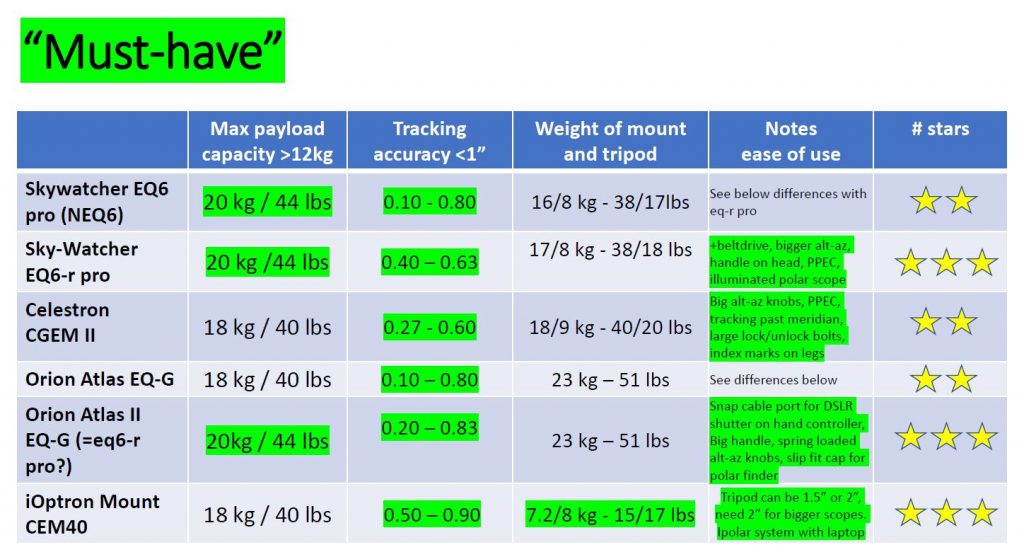
Nice to haves
Moving on to the nice to haves. I personally would like to see a USB connection on the mount, any option to connect the mount wireless , GPS, and support for both Vixen and Losmandy style tails of telescopes. I didn’t find a lot of differences between the mounts when looking into these nice to haves. Unfortunately, none of the mounts natively supported a wireless connection. However, additional hardware can be bought to enable a wireless connection. All of the mounts supported both vixen and losmandy style dovetails, meaning that most kinds of telescopes will fit on these mounts. One difference was that the standard Ioptron CEM40 includes GPS. Other mounts can also be outfitted with GPS, but you will have to buy an extra dongle which can be connected to the mount. GPS can be useful when you are observing from different locations. GPS automatically informs the mount about its latitude position which saves you some time when setting up the mount and performing polar and star alignment procedures. Another difference was that the older EQ6 pro, Atlas EQ-G and CGEMII mounts do not include a direct USB connection to the mount. This complicates the connection process in my opinion, as you first need to connect the hand-controller to the mount and then run a cable from the hand-controller to your PC or Laptop. I personally prefer a direct USB connection on the mount, as there is one piece of hardware less to worry about. The newer Skywatcher EQ6-r pro, Atlas II and Ioptron CEM40 all have a USB 2.0 connection on the mount.
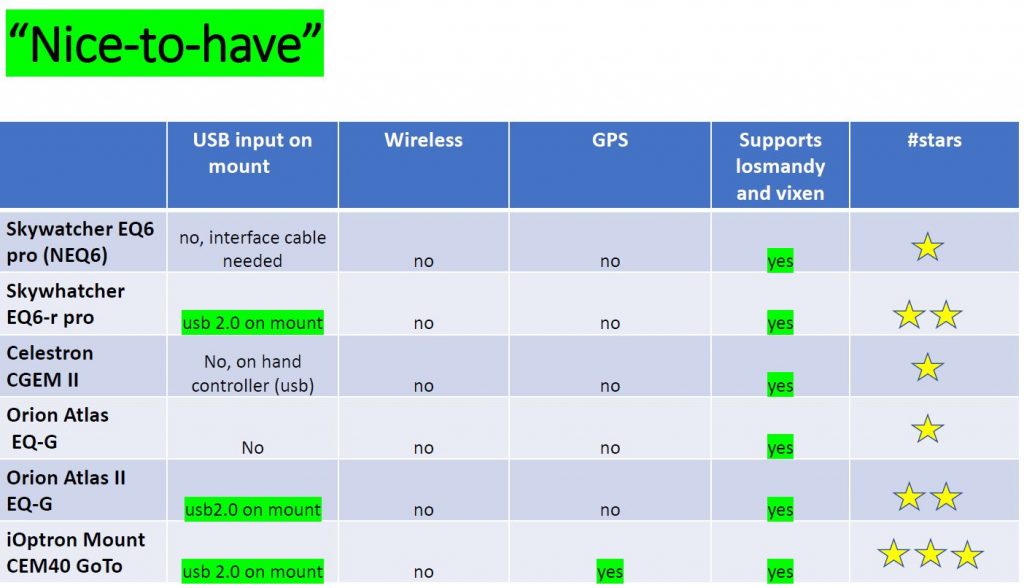
Conclusion
I highly urge you to do your own research. Each of the mounts have specific pros and cons which may be more or less important to you. Don’t mind the lack of USB and a heavier mount? Then you might want to consider the Celestron CGEMII, or the somewhat older EQ6 pro and Atlas EQ-G mounts. Don’t like to carry a lot of weight? Then you may want to consider the Ioptron CEM40. Do you like USB2.0 on the mount and a high maximum payload? than the Skywatcher EQ6-r pro and the Atlas II EQ-G would win this race. I came to the conclusion that for my personal situation, the Skywatcher EQ6-r pro and the Atlas II EQ-G tick most of my must haves and nice to haves at a favorable price. So these mounts are my personal favorites, and I will look for a good deal on the Skywatcher EQ6-r pro. The Orion Atlas II EQ-G appears to be only available in the USA. Below you will find links to webshops that sell the advanced mounts discussed in this blog. You can also download a pdf of my powerpoint presentation used in the video. I sincerely hope this information helps you to find your next “advanced” equatorial mount. Clear skies!
Links to webshops
Skywatcher EQ6-r pro
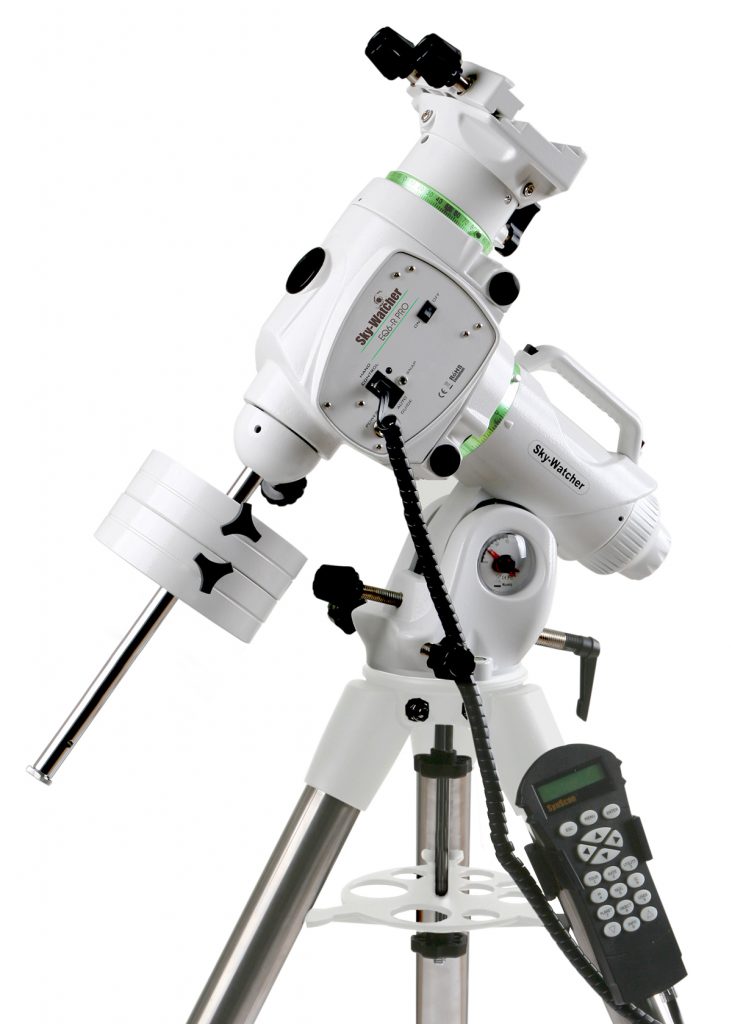
OPTcorp.com
Amazon.com
Astroshop.eu
Atlas II EQ-G

OPTcorp.com
Ioptron CEM40
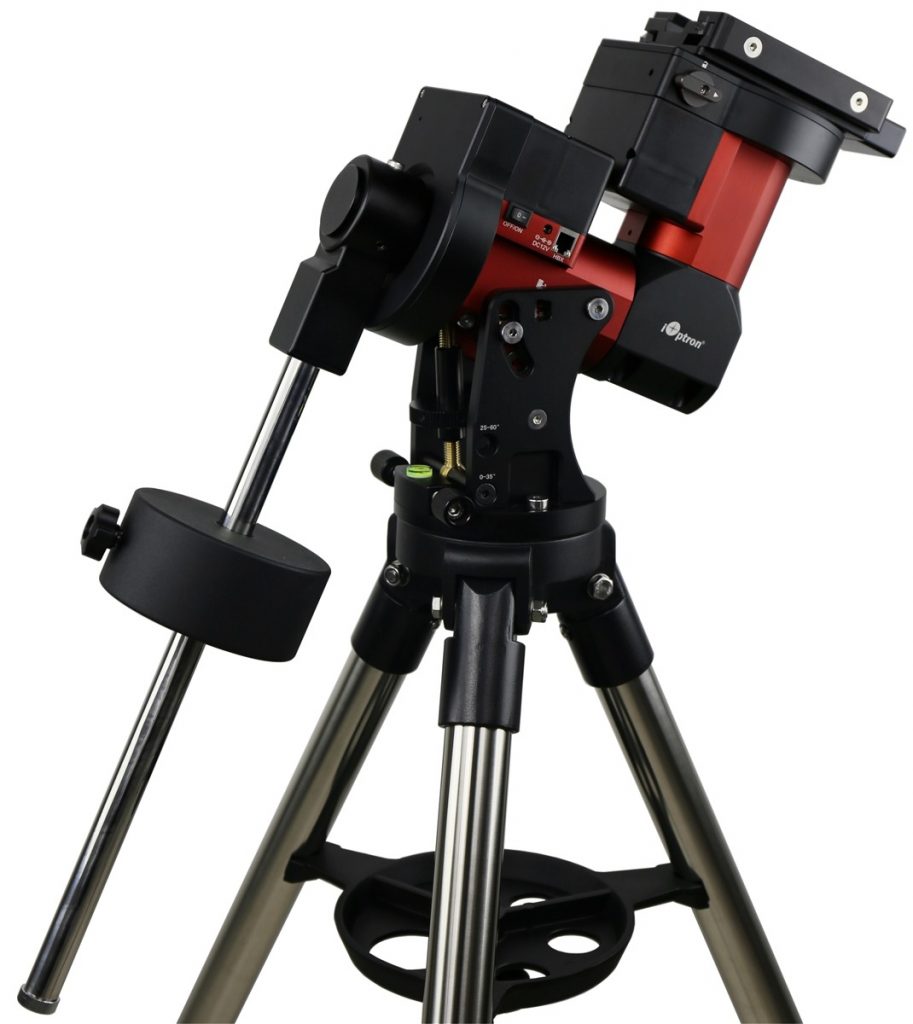
OPTcorp.com
Amazon.com
Astroshop.eu
CELESTRON CGEMII
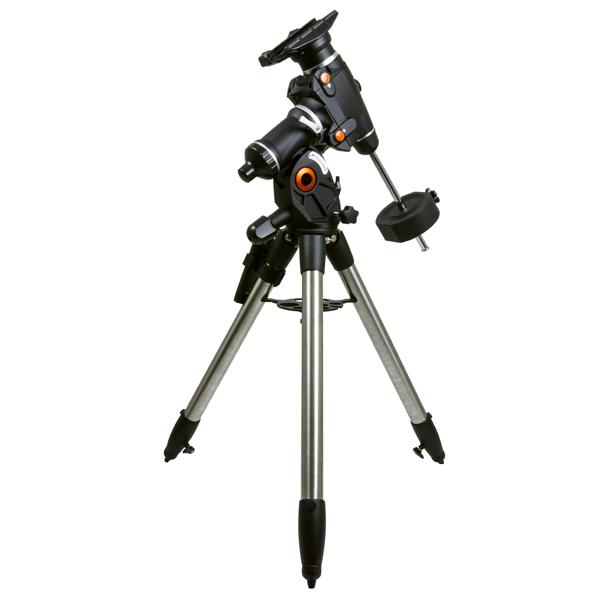
OPTcorp.com
Amazon.com
Astroshop.eu
Atlas EQ-G

OPTcorp.com
Amazon.com
Astroshop.eu
Skywatcher EQ6 pro (NEQ6)

Hi, watched this on YouTube and thought it was very informative. Can I suggest you do another video of mounts that are the slightly smaller capacity mounts; e.g.
Sky watcher eqm-35
Explore scientific EXOS-2
Meade LX85
iOptron CEM25p
And of course your Celestron AVX mount.
Keep up the good work.
Hi Peter, Thank you for your positive feedback, highly appreciated! As for the smaller capacity mounts, I did a review on my AVX, you can watch the video and/or read my blog here: https://astroforumspace.com/celestron-advanced-vx-review/ I also mention some of the competitors in that vlog such as the CEM25p and the LX85. Hope this is useful to you, and I’ll look into making a dedicated video on entry level mounts for AP. Clear skies!
Hi Wido: Love your videos. I’m new to this astrophotography game and like you I would have to travel generally by air to get to anyplace with relatively dark and clear skies. So mount capacity is ultra important to me.
Question 1. On the web sites for most of these mounts they caveat their payload capacity with (*Excluding Counterweight) so you’re really looking at the advertised Payload – the weight of the counterweight. Do you agree with my assessment?
Question 2. In your video on beginners mounts I think you stated that one should half the payload to be safe and assure tracking accuracy. So is what you are really recommending (advertised Payload – the weight of the counterweight)/2 ?? That seems to really limit these mounts. What do you think please?
Thanks in advance for entertaining my very primitive questions.
Mike
Hi Michael, the payload capacity is the payload capacity, its not related to the counterweights which are needed to balance the telescope on the mount.
Yes, I do stand by my remark that most mounts work better for astrophotography when you are not taxing them to the maximum payload capacity.
If that’s one half or one third or more/less depends a bit on the specific mount, but as a general rule I would recommend a mount that can comfortably carry your payload weight.
Hi Peter, I just finished another video where I compare seven beginner level mounts. It will be out on the 5th of March. The video is a bit long atm, about 30 minutes, so hope it is not too boring to watch :-).
Celestron has a better polar alignment routine than Skywatcher.
Thanks for the feedback David! I also like the polar alignment routine on my Celestron AVX, although lately, I just use sharpcap and run the mount without the all star alignment procedure.
Hi Peter
I’m reaching out to you from Sacramento California, USA. I was curious why the iOptron CEM40 wasn’t your first choice since it had the most stars? Was it the price? I really liked that it is so light. What mount did you buy?
Thank you. I really enjoy your vlogs.
Hi Peter,
Thanks! Yes, you are right. The CEM40 was a little over budget for me so I went with the SkyWatcher EQ6-R Pro.
If you have the money, or perhaps if the CEM40 has a discount, it would be a very interesting mount.
I have to say the weight is doable on the EQ6-R pro, but the CEM40 is definitely better in this respect.
Are you planning on doing astrophotography on remote locations or primarily from your own backyard?
Good luck deciding!
Best,
Wido.
I will be doing the astrophotography from a remote location. My backyard is too small with trees and other buildings in close proximity. I plan to try some in my front yard which faces the southern sky, if I can.
Sorry for the late response Robert, hope you will find a good spot to enjoy the night sky!
Thanks for the review it was most helpful. I went with the iOptron CEM40. After a few decades of life I have some to understand that a little more upfront can pay off in the long run. In addition to a couple of features I find valuable, notably iPolar, the weight difference is important. Compared with the EQ6 Pro the difference is 11.8 kg (26 lb.). If dragged out once a week for 10 years the difference in weight shifted, carried, and lifted is about 6,130 kg (~13,500 lb). With a price difference of Euro 450 that works out to Euro 45/year, Euro 4/month, or about Euro 0.07/kilo. Those numbers work, for me at least.
Hi Josef, thanks for reading my blog and the positive feedback. I think your calculations make sense and I hope you’ll enjoy the CEM40! I would be interested to hear about your experiences with this mount. Clear skies!
First, thanks for your YouTube videos. I have found them very informative. Second, I’m looking for my first mount and have been thinking about the Sky-Watcher AZ-EQ 5 mount and was wondering if you had any thoughts on it?
Hi Frank, thanks! That is a good mount, but what kind of telescope are you going to use? And keep in mind that alt az is useful for planetary imaging and visual astronomy, but for Deep-sky Astrophotography you’ll always need the EQ config. Cheers!
Ik wil een Skywatcher EQ-6 pro of EQ-6 r pro kopen maar de prijzen lijken in een jaar en drie maand met ongeveer 500 euro zijn gestegen. Weet iemand waar de oudere prijzen nog worden gehanteerd?
Misschien even terug in de tijd proberen te reizen naar het pre-corona tijdperk…
Een vraagje kreeg je een gratis accu bij de eq 6-r-pro? Trouwens leuke video’s
Dank je. Er zit wel een stroomvoorziening bij als je dat bedoeld? Een accu zit er niet bij die moet je apart aanschaffen.